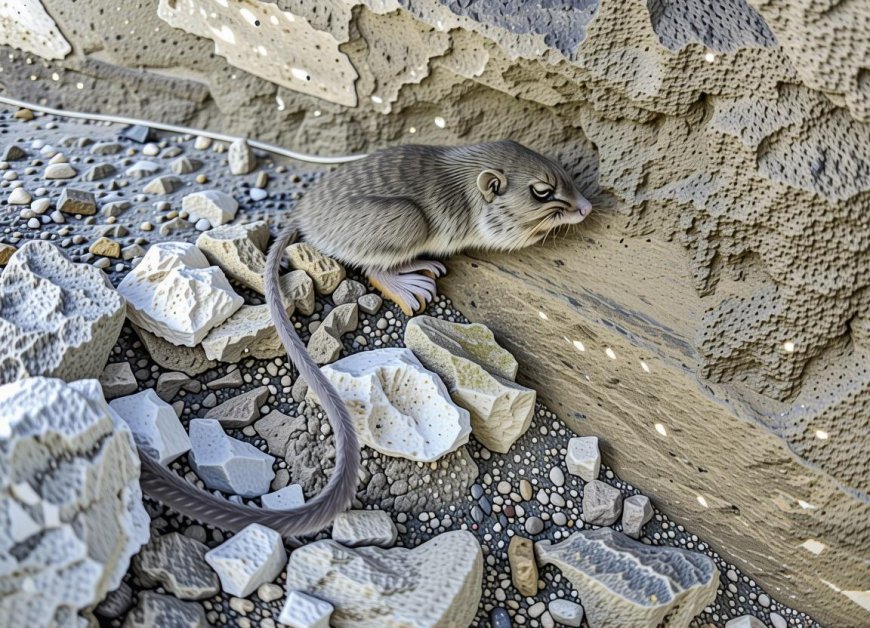Unveiling Nature’s Secrets: The Surprising Surge in Mammal Diversity | PRIMENEWSNOW

Unveiling New Mammal Discoveries: A Growing Frontier
For centuries, scientists have been cataloging mammal species, leading many to believe that all have been identified. However, a groundbreaking study in the Journal of Mammalogy reveals that our knowledge of mammal diversity is rapidly expanding, more than most realize.
Expanding the Mammal Diversity Database
Researchers from Arizona State University, in partnership with the American Society of Mammalogists, have updated the Mammal Diversity Database. This update recognizes 6,759 living and recently extinct mammal species, marking a 25% increase since the last major taxonomy in 2005.
Since the previous edition, known as Mammal Species of the World, Volume 3, scientists have identified 1,579 new species, including 805 newly described and 774 reclassified from known species. During this period, 226 species were merged or removed, resulting in a net gain of 1,353 species, averaging about 65 new species annually.
Keeping Pace with New Discoveries
Nathan Upham, an assistant professor at the School of Life Sciences, emphasizes the importance of maintaining a system that adapts to the continuous influx of research. “Every week, new findings reshape our understanding of mammal diversity,” he notes. “Sometimes it’s a new species, other times it’s realizing a single species is actually multiple.”
The database tracks the taxonomic changes within the class Mammalia, serving as a dynamic record of how humans interpret nature’s family tree. Over the past two decades, new species have been identified in 20 of the 27 mammal orders and 98 of the 167 families, covering nearly every major group from rodents to whales.
Key Contributors to Mammal Diversity
The orders contributing most to this growth include Rodentia (595 new species, a 21.7% increase), Chiroptera or bats (410, up 27.6%), Eulipotyphla, including shrews and moles (166, up 27.7%), and Primates (161, up 30.8%). These figures highlight the vast biodiversity yet to be explored, even among well-known animals.
“Rodents and bats account for nearly two-thirds of mammal diversity,” Upham explains, with rodents making up 41% and bats 22%. “Despite their prevalence, they remain some of the least understood due to their small size and nocturnal habits. There’s still much to learn about these elusive creatures.”
Modernizing Mammal Taxonomy
The Mammal Diversity Database has revolutionized a field once reliant on printed volumes updated only every decade. “Before this database, mammal taxonomy was confined to books,” Upham says. “Researchers might not realize a species’ name or classification had changed. Now, all literature, citations, and updates are centralized, allowing researchers to track changes over time.”
One of the database’s most valuable features is its record of synonyms, or outdated scientific names. “It’s like a translation table,” Upham explains. “If you’re reading an old paper or examining a museum specimen with an obsolete name, the database provides the current name, ensuring consistency across time.”
Global Discoveries and Challenges
The study highlights regions rich in biodiversity, such as Madagascar, the Andes, Indonesia, and the Philippines, where new discoveries are frequent. However, areas like West and Central Africa, the Amazon Basin, and parts of Asia remain understudied due to limited access to genetic tools and funding, compounded by threats like deforestation.
“Technology is a major driver of new discoveries,” Upham notes. “Genomic methods, CT scanning, and advanced computational tools reveal evolutionary relationships in greater detail. Global collaboration is crucial to study and protect biodiversity before it’s lost. In South America, for instance, most new taxonomic work is led by local scientists, a trend also emerging in Africa.”
The Future of Mammal Discovery
If current trends persist, researchers predict that by 2050, over 8,000 living mammal species will be recognized. This growth reflects improved tools and increased global scientific involvement. However, with this rise in recognized diversity comes a pressing need for conservation efforts.
The study indicates that the International Union for the Conservation of Nature is lagging, with 25% of mammal species categorized as Data Deficient or Not Evaluated. This highlights the need for better integration of the Mammal Diversity Database with conservation organizations like IUCN, NatureServe, and iNaturalist.
For Upham, the database’s growth is about enhancing our collective understanding. “It’s easy to think we’ve discovered everything,” he says. “But we’re still learning about the animals that share our planet. Each new name is a reminder that the story of life on Earth is still unfolding, and we’re just beginning to grasp its full extent.”
What's Your Reaction?
 Like
0
Like
0
 Dislike
0
Dislike
0
 Love
0
Love
0
 Funny
0
Funny
0
 Angry
0
Angry
0
 Sad
0
Sad
0
 Wow
0
Wow
0




















































